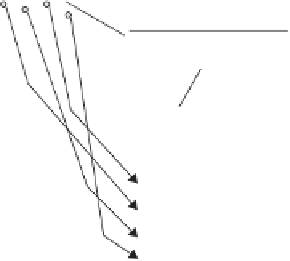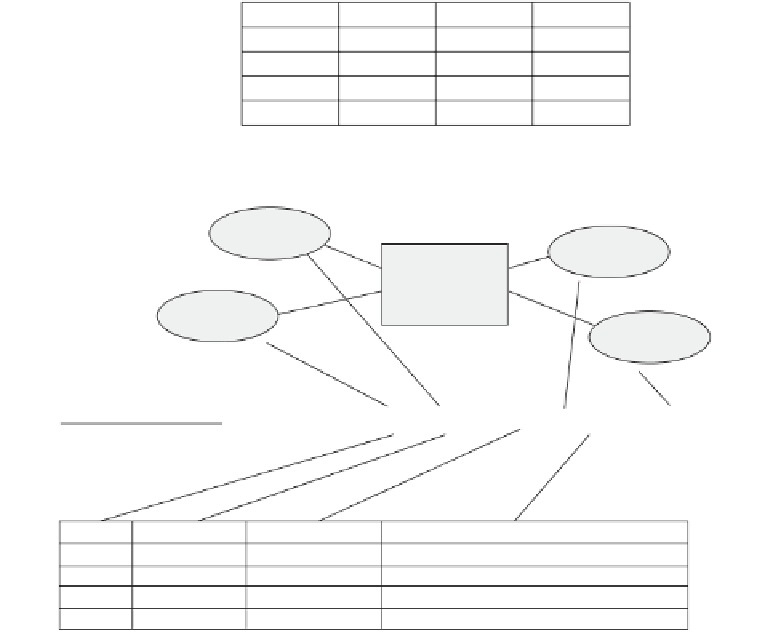Database Reference
In-Depth Information
Object Set
OR
Entity Type
EMPLOYEE
Relational Notation
EMPLOYEE (Attribute1, Attribute2, Attribute3, Attribute4)
EMPLOYEE relation
Attribute1
Attribute2
Attribute3
Attribute4
.
EMPLOYEE
instances
.
Figure 9-3
Mapping of object set or entity type.
SocSecNo
EmpName
EMPLOYEE
EmpID
EmpAddr
Relational Notation
EMPLOYEE (EmpID, SocSecNo, EmpName, EmpAddr)
EMPLOYEE
relation
EmpID
1234
2345
3456
4567
SocSecNo
101-38-2121
320-55-9641
333-22-1111
123-47-3257
EmpName
EmpAddr
Daniel R. Grady
6 William Street, Jamesburg, NJ 08810
Alice M. Knox
1 Bradford Place, Iselin, NJ 08834
Matthew Rader
47 Woods Drive, Edison, NJ 08817
Ramola Ruskin
55 Walker Lane, Metuchen, NJ 08819
Figure 9-4
Mapping of attributes.
Attributes
Objects have intrinsic or inherent characteristics, so naturally, the next component
to be considered is the set of attributes of an object. Figure 9-4 shows the transfor-
mation of attributes.
Make note of the following points with regard to the transformation of attributes:
•
The attributes of an object are transformed into the columns of the corre-
sponding relation.
•
The names of the attributes become the names of the columns.
•
The domain of values of each attribute translates into the domain of values for
the corresponding column.





Search WWH ::

Custom Search